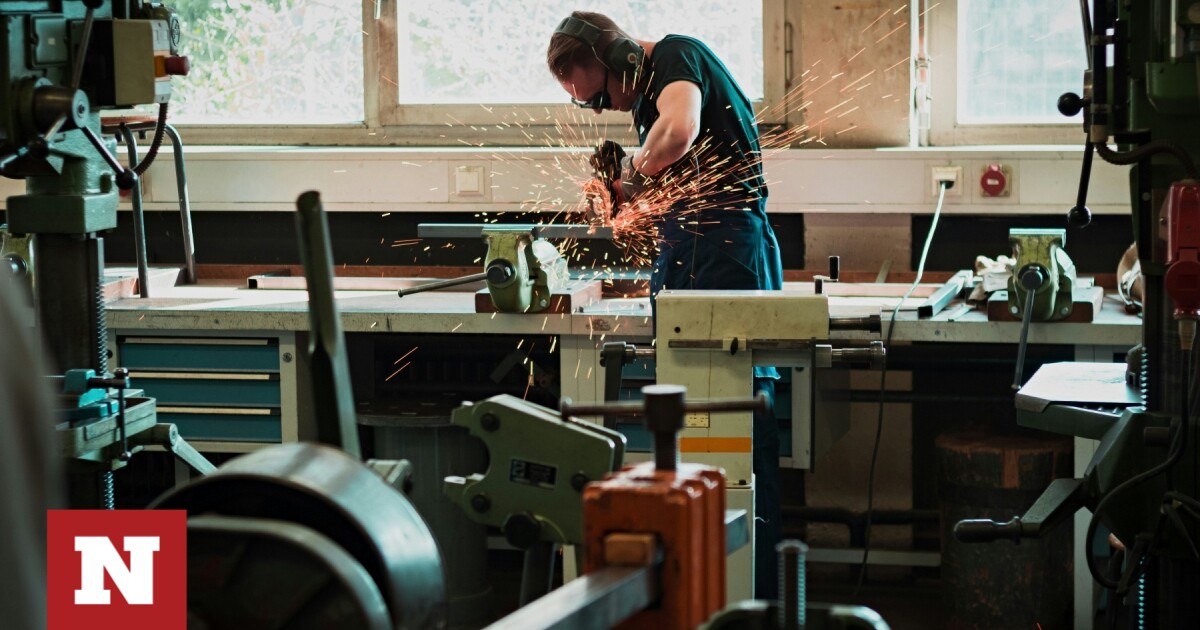![This is how Vasilisis Olgas will change – highlighting greenery, benches, lamps and antiques [εικόνες]](https://www.iefimerida.gr/sites/default/files/styles/facebook/public/2023-02/vassilisis-olgas-maketa-tram-akropoli.jpg?itok=V8fyEMv2)
The contract between the Municipality of Athens, signed by “Athens Redevelopment SA” and the contracting company – as a result of an open tender – marks the immediate start of works for the reconstruction of Vasilisis Olga Avenue.
What will change in Vas Olkas?
Creating an open space for the public, which will unite Olympia with Zappione and the National Garden and complete the archaeological route from Keramikos to Mount Artitos and the Panathenaic Stadium.
Athens Mayor Kostas Bagoyiannis stressed in his statement immediately after signing the contract for Vaz Olga at the Athens City Hall: “Today we are taking another step towards fulfilling the vision of Melina Mercoris and Antonis Tritzis, which united the Olympic Stadium with the Zappos and the National Garden. Today we are proud of Dionysiou Areopagitou, tomorrow Let’s be Vas Olkas. The Acropolis and Kallimarmaro are approaching on one of the most beautiful routes in Europe.”
For his part, “Anaplasi Athens S.A.” Kronis Akritidis said: “After 26 years, a suffocating project for the city is becoming a reality. We are happy that the redevelopment of P. Olgas Avenue is on the way to immediate implementation, which creates conditions for a quality and better life in the center of the city”.
Architectural form of pedestrian street in Vas Olkas
Between the archeological site and Zappione’s neoclassical geometry, the design of the pavement is carried out by a script similar to modern construction. The axes of the pedestrian connection with Dionysiou Areopagitou and Ardittos Hill form the basic longitudinal frame around which the pedestrian walkway is arranged. In a cross sense, decisive for the design of the sidewalk is the Zappeion axis, which culminates in Vasilisa Olga’s pedestrian street framed by square marble benches and low cylindrical structures. The purpose of these constructions, beyond their use as living rooms, is to create a plastic structure that emphasizes the central axis of the Zappeion.
Athens Municipality: Transformation of Gallica Square in Kato Patisia – with playground and green spaces
Municipality of Athens: Turkey, humanitarian assistance to earthquake victims in Syria – collection points
The sidewalk frontages towards Amalias Avenue and Vasilios Constantinos Avenue, from Vasilisis Sofias Avenue to Athanasio Diego Street, are designed with plantings to create an image of a single space without obstructing the passage of cars. A slanted cross shaft outside the entrance to the archaeological site indicates a possible access to the entrance to the Themistoclean Wall.
Green surfaces in Vas Olkas
A free configuration of hard surfaces and green surfaces is planned between the two symmetrical entrances to the central axis of the Zappeian Garden, which forms an angle of about 80 degrees to Vasilisis Olgas Avenue, which will contribute to the relaxation of the image. Porch. This free configuration is formed by a series of concentric or heterocentric circular curves. The structure is formed in a smooth way due to the gentle slope, with a succession of counter-directions and tangents between the circular arches towards the eastern side of Zappeion’s central axis.
The creation of hard and planting surfaces along the entire length of the walkway is done without affecting the existing large trees, including the remarkable cypresses and olives located on the central island of the avenue. Where necessary, existing tree lines are supplemented and important new surfaces are created with low and high plantings. Attic plants are used to harmonize with the existing flora and create a familiar atmosphere for visitors and passers-by.
Sidewalk Pavements are designed with strips of marble or dressed concrete placed diagonally across the pavement to provide rhythm for traffic. Some strips have a radial direction and need to synchronize the coating with its main components Pedestrian surfaceHadrian’s Gate, Lord Byron’s Statue, and Japius’ Print. The statue of Alexander the Great placed at the intersection of Vasilizas Amalia and Vasilizas Olgas avenues is as harmonious as possible with the configuration.
The surfaces within the formwork strips are framed with slate layers. Between the formwork strips of the runways, asphalt is planned for the uphill runway, the tennis club and the downhill runway used for traffic to prevent vehicular traffic as much as possible. Cobblestone surfaces shall be constructed outside the paths that define the area of safe pedestrian movement.
The study considers the maintenance, renovation, completion and reconstruction of Zappeion’s rails and the National Gymnastics Club, Swimming Pool and Tennis Club.
Barrier-free access for persons with disabilities
The structure of Vasilisis Olgas Avenue ensures unhindered access for the disabled along the entire length of the corridor. As the only unevenness across the avenue ends with a 5 cm high curb and a cut-off at the edge, ramps are not required for the movement of people with mobility problems. For the blind, their path will be marked with 30 cm wide white engraved plaques.
158 new trees and 8,538 shrubs in Vas Olkas
The total area of the redevelopment is 28,360 square meters. In addition to surface structures and equipment, this includes:
· Plantation of 158 trees, 8,538 shrubs and plants in low-lying areas.
· 112 lighting masts and 156 lighting bodies, including new tram stop lighting masts and bodies.
· 46 new masts for tram or trolley with single cantilever and 11 masts with double cantilever.
Preservation and Promotion of Antiquities
On the south-southwest corridor of Vasilisis Olga Avenue and 70 meters west of the entrance to the archaeological site, are the surface remains of a Roman palanium. After the necessary excavations are done, a system will be created to preserve and highlight them.
Beyond Vasilisis Olga Avenue, the area around Hadrian’s Gate will be reformed with stabilized soil and diverted to drain rain to prevent damage to the monument’s foundation.
No change in existing cycle
By constructing pedestrian works, the space shall be given over entirely to pedestrians, except:
- Tram’s top and bottom lines from syntagma. The descent path will be used for entry and exit of EIX. Cars passing by tennis club and public utility vehicles.
- Uphill trolley lane from Pakratty to Syntagma.
- Entry path of EIX. Cars to the “Aigli” parking lot in Zappeio. They will exit from the small alley located at the southeast end of Fogianos Gymnasium.
The tram stop in the direction of Syntagma, located on Artitos Avenue, in front of the entrance of the National Gymnastics Association, will be transferred to the pedestrian street of Vasilisys Olgas Avenue, opposite the stop in the opposite direction. One of the two stops of the trolley rise lane is placed at the height of the tram stop, ensuring interchange between the two routes. The trolley’s second stop is opposite the entrance to the archaeological site of Olympia.
Project history and budget
The boulevard regeneration study was prepared in 2011-2014 by the Integration of Archaeological Sites SA (EAXA) and carried out by the Office of Architectural and Urban Studies “Giorgos Proveleggios, Niovi Probeleggiou and Associates EE”. In mid-2020, the Municipal Authority of Athens in charge of “Regeneration of Athens SA” The updated study was initiated below. The updated study was approved by the Central Architecture Council and then by the Athens City Council. The project has a contractual budget of 4,606,819.10 (without VAT) and is financed by the TPA of the Ministry of Infrastructure and Transport.

. “Professional creator. Subtly charming web advocate. Unapologetic problem solver. Devoted student.”





More Stories
Weather: Strong storm and hail in Thessaloniki
Express: This Greek island is the sunniest place in Europe in May
Raman reacts to reactions to Greece visit